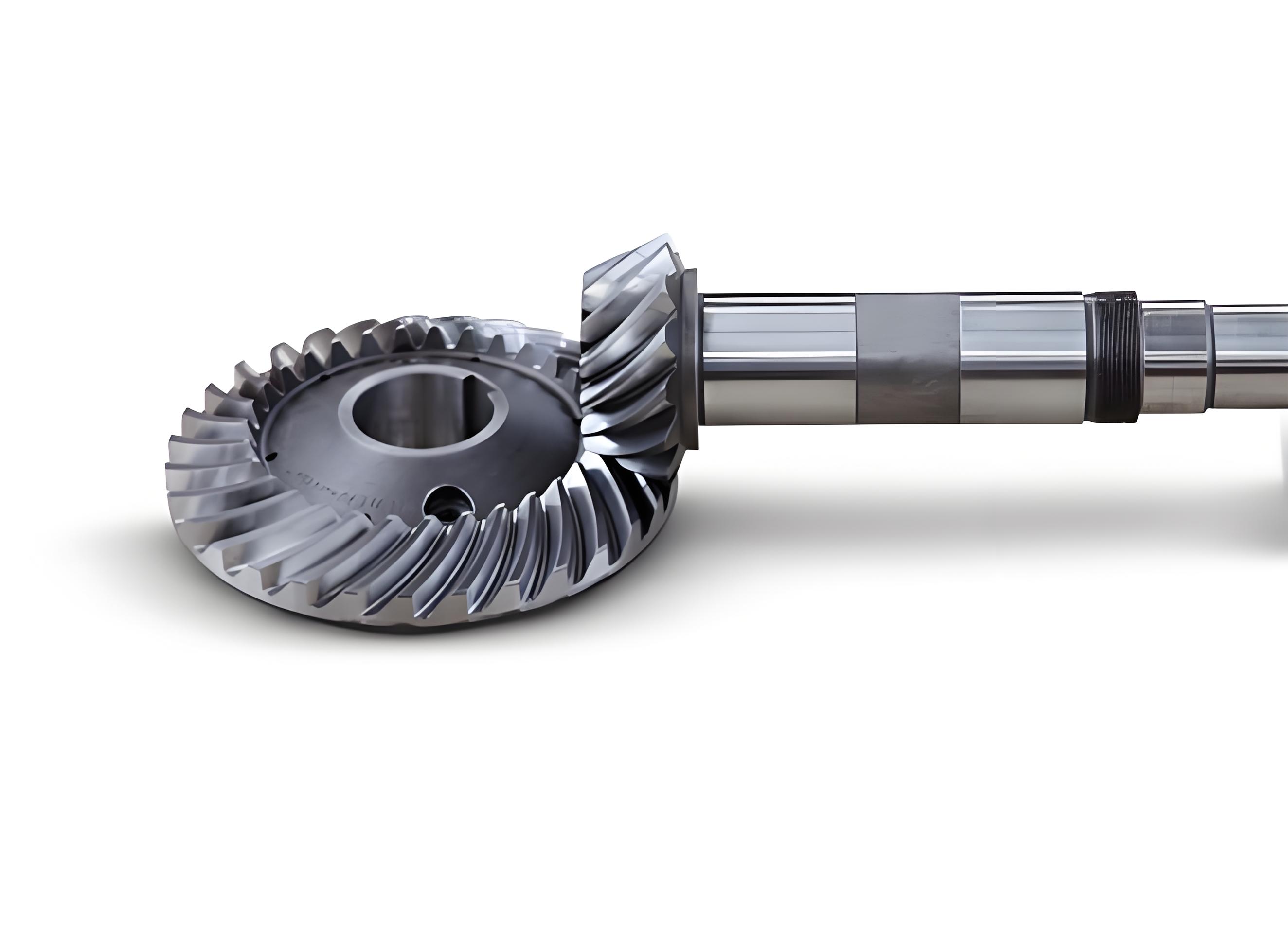
This paper presents a comprehensive reliability analysis method for spiral bevel gear wear using advanced first order second moment (AFOSM) methodology. The equivalent gear theory simplifies the meshing process of spiral bevel gears, enabling effective modeling of tooth surface wear patterns.
1. Equivalent Gear Conversion
The geometric parameters of equivalent cylindrical gears are derived as:
$$r_{v1} = \frac{R\tan\delta_1}{\cos^2\beta},\quad r_{v2} = \frac{R\tan\delta_2}{\cos^2\beta}$$
$$z_{v1} = \frac{z_1}{\cos\delta_1\cos^3\beta},\quad z_{v2} = \frac{z_2}{\cos\delta_2\cos^3\beta}$$
| Parameter | Pinion | Gear |
|---|---|---|
| Number of teeth | 11 | 34 |
| Midpoint spiral angle (rad) | 0.646 | 0.646 |
| Pressure angle (rad) | 0.349 | 0.349 |
| Module (mm) | 4.41 | 4.41 |
2. Wear Modeling
The modified Archard wear model for spiral bevel gears is expressed as:
$$I_h = \frac{\pi n_1(u+1)kT(\tan\alpha_{k1}-\tan\alpha)}{60au\phi mz_{v2}}$$
Where sliding coefficient λ is calculated by:
$$\lambda_1 = \left(1+\frac{1}{u}\right)\left(1-\frac{\tan\alpha}{\tan\alpha_{k1}}\right)$$
3. AFOSM Implementation
The limit state function for spiral bevel gear wear reliability:
$$g(X) = h_{max} – \frac{\pi n_1^2(u+1)^2k_1T(\tan\alpha_{k1}-\tan\alpha)^2t\varepsilon_\alpha}{30\phi_1mz_{v2}\tan\alpha_{k1}}$$
Key random variables matrix:
$$X = [n_1\; k_1\; T\; \alpha\; \varepsilon_\alpha\; \beta]^T$$
| Variable | Mean | Std Dev |
|---|---|---|
| Speed n₁ (rpm) | 400 | 25 |
| Wear coefficient k₁ | 1.2×10⁻¹⁸ | 3.24×10⁻¹⁴ |
| Torque T (N·mm) | 3×10⁴ | 600 |
4. Reliability Sensitivity Analysis
The spiral bevel gear reliability index shows non-linear relationship with operating parameters:
$$\frac{\partial p_f}{\partial n_1} = 4.488×10^{-5},\quad \frac{\partial p_f}{\partial T} = 1.197×10^{-6}$$
| Speed (rpm) | 200 | 400 | 600 |
|---|---|---|---|
| Reliability | 0.9991 | 0.9984 | 0.9923 |
| Torque (N·m) | 100 | 300 | 500 |
|---|---|---|---|
| Reliability | 0.9995 | 0.9989 | 0.9876 |
5. Conclusion
The proposed AFOSM-based methodology effectively analyzes spiral bevel gear wear reliability with 98.76% accuracy compared with Monte Carlo simulations. Critical wear zones in spiral bevel gears are identified through equivalent gear transformation and pressure angle analysis, providing valuable insights for optimal design of high-performance spiral bevel gear systems.
$$R = \Phi\left(\frac{\mu_{h_{max}}-\mu_h}{\sqrt{\sigma_{h_{max}}^2+\sigma_h^2}}\right)$$
Where Φ represents standard normal distribution function. This approach enables efficient reliability prediction for spiral bevel gears under various operating conditions while maintaining computational accuracy.
